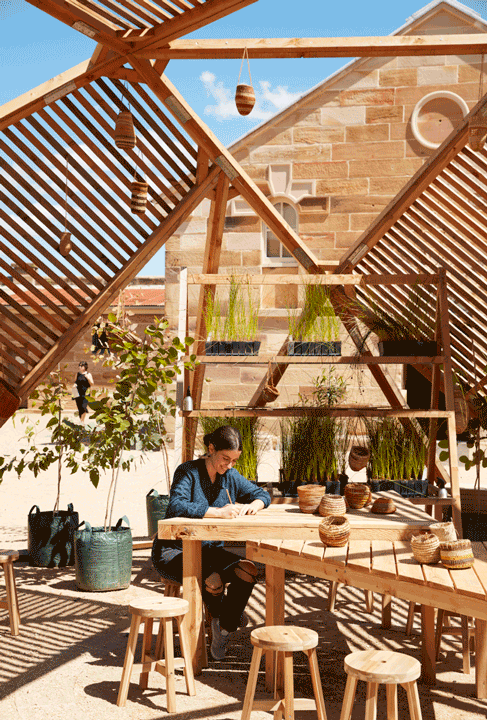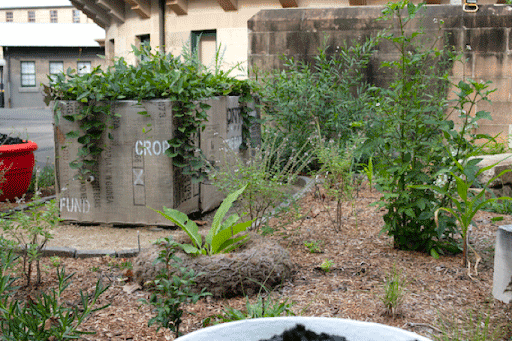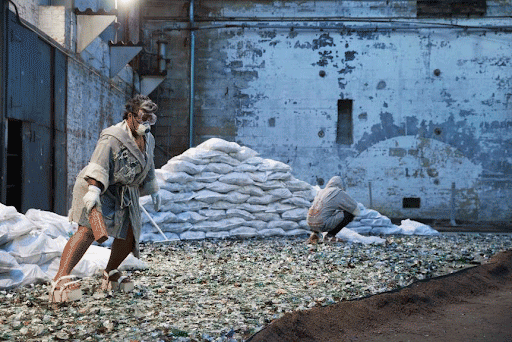Currently running until September 2020 in Sydney is, Nirin, the 22nd Sydney Biennale. The title comes from an Aboriginal Wiradjuri word meaning “edge” and perhaps signals to the precarious state of where the world sits, as protests call to right the wrongs of the colonial past. The Biennale’s Director Brook Andrew is the first director of Aboriginal heritage in the show’s history. An artist known for offering alternative perspectives to colonial history, Andrew used the Biennale this year to continue his message. Andrew enlisted a roster of mostly First Nations and other Indigenous artists from around the globe to exhibit at the Biennale. He sought to return the narrative to voices that have been left in the shadows for too long, and in doing so give the spotlight to work that offers solutions to modern-day issues such as climate change. Indigenous culture encourages harmony with the earth, and so the perspectives is to offer hope, knowledge, and solutions to the issue.

Reimagining the colonial past is as important as it is timely, and global protests have targeted the institutional racism that the difficult Western past has instilled. Andrew’s Sydney Biennale brings together First Nation voices at the pivotal time, and the stage is set for their stories. To connect back to Indigenous heritage is to connect back to the land. As climate change creates irreversible effects on the earth, evident in Australia’s wildfires last summer, the world will benefit from more awareness and greater perspectives. Many of the Indigenous artists represented at the Biennale displayed artwork discuss climate change.
Here are three Indigenous artists and their work from this year’s 22nd Sydney Biennale that look at climate change:

Tony Albert, a descendent one of four of Australia’s First Nations People, asks visitors to connect with the memory of their own homelands, while in a contemporary ceremony in this piece. A sustainable greenhouse contains Native Australian baskets, which offer pieces of handmade paper that are embedded with Kangaroo grass seedlings. Visitors are invited to jot down a memory on each piece of paper, then plant that memory in the garden.
The project connects to the history of the Blacktown Native Institution, which forcibly assimilated First Nations people into colonial life between the 1910s and 1970s in Australia. Albert finds that the soil of his Native land is stained by these atrocities, and hopes through the planting of new seeds and new memories the land might be healed. The catastrophic fires last summer made it clear to him that the planet needs environmental and emotional support. Healing the land will also ease the painful past of his people, and pave the way to a more productive dialogue about their suppressed history. Albert believes that we are all subjects of the land and we must return the gift it has given us. Healing Land, Remembering Country serves to return the gifts to the land by honouring the memories.

Alchemy Garden is an interactive community-based garden project. Andrew Rewald gathered found objects in order to reflect on the land and its use from pre-European invasion to the present. The garden incorporates native and non-native plants as well as different styles of agricultural practices, and examines different practices that shaped the land over time. Ultimately, Rewald wants the audience to consider that pieces of Indigenous history carry important lessons, and these messages should echo into the present.
Among the garden’s features are repurposed building materials, a vessel of bioactive charcoal to filter wastewater, coir logs to control erosion, and terraced landscaping that directs water flow. A local community group is maintaining the garden during the show, while Rewald conducts presentations and workshops about more sustainable relationships between people, their food, and the earth.

The Last Resort uses performance to bring awareness to the issues that face destination islands in the Pacific Islands like the artists’ Native Tonga. These idyllic island landscapes are popular tourist destinations but are often overrun and left with an abundance of trash. Taumopeau asks the audience to consider the locals and their fate as they are left to deal with the results of a colonial lifestyle, which contributes to stressors from rising seas to economic dependency.
In their performance, Taumopeau and her cousin Taliu Aloua wear brick sandals and walk over glass that was collected from Sydney night clubs. They also use an ‘ike (Tongan mallet) to further smash the glass. White sacks full of the glass bottles surround the performance area as if they were sandbags along a coastline. The artist explains that by smashing the glass down to bits and pieces, she is imagining who will reconstruct the islands when they succumb to climate change’s rising seas. She aims to draw attention to the Native people’s vulnerability and the reality of modern practices and climate change for underrepresented populations.
